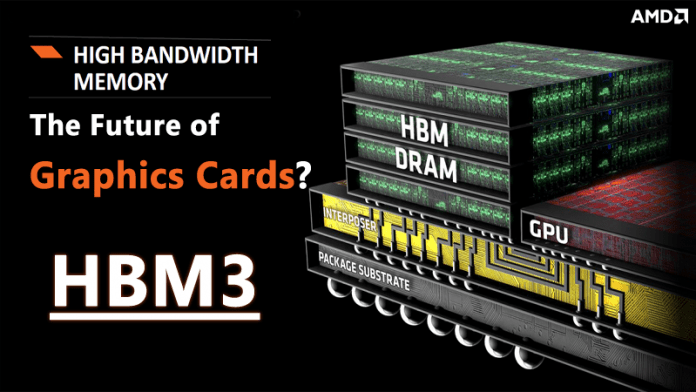If you are a game enthusiast then you might know about VRAM (Video Ram). VRAM which was once commonly used to store the framebuffer in some graphics adapters. VRAM improved the overall framebuffer throughout, allowing low-cost, high-resolution, high-speed, color graphics. Now it’s time for HBM, (High Bandwidth Memory) is a high-performance RAM interface for 3D-stacked DRAM from AMD and Hynix. It is to be used in conjunction with high-performance graphics accelerators and network devices. HBM supports transfer rates of 1 GT/s per pin (transferring 1 bit), allowing an overall package bandwidth of 128 GB/s. The main problem of HBM is its price, it is way too high-priced to use on any cards. We have seen HBM2 was limited in availability that’s also on selected NVIDIA cards. However, HBM3 was recently announced at the Hot chips symposium and the report stated that the new HBM3 will be of “Low cost”. According to Arstechnica “HBM3 will feature a lower core voltage than the 1.2V of HBM2, as well as more than two times the peak bandwidth: HBM2 offers 256GB/s of bandwidth per layer of DRAM, while HBM3 doubles that to 512GB/s.” Meanwhile, Samsung is also working on HBM3 which the call is “Extreme HBM” that will push a blazing 200GB/s. We have also seen AMD’s new Zen architecture which is composed of a 14nm FinFET architecture that’s not only smaller, but also more power effective while delivering 40% better performance and reduce wasted power has been designed with the potential to house HBM. One thing is for sure if AMD prefers HBM for system RAM then it could give the most energetic performance of integrated GPU and CPU. Share your views with us.
Δ


